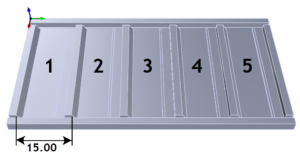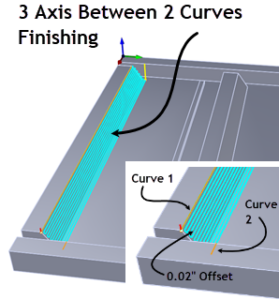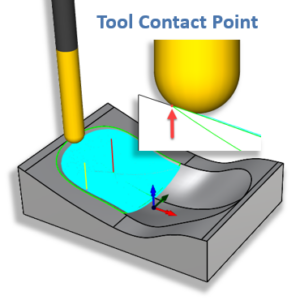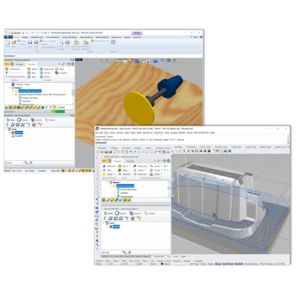Using a Ball End Mill can require up to 10 times more system resources during toolpath generation than Flat End Mills. This is compounded further during cut material simulations. The reason is simple. Compare the mathematical complexity of a sphere to a circular plane.
The effects of the sphere at the end of the Ball End Mill must be calculated at every cut point in the toolpath. If your PC system resources meet only the minimum requirements of the CAM software, the processing time will be extended and your system may become unresponsive.
The effects of the sphere at the end of the Ball End Mill must be calculated at every cut point in the toolpath. If your PC system resources meet only the minimum requirements of the CAM software, the processing time will be extended and your system may become unresponsive.
Are There Other Concerns?
YES. One of the benefits of using a Flat End Mill instead of a Ball End Mill in roughing is the Flat End Mill’s ability to clear flat areas of your part automatically. This clearing of flat areas is impossible
Have a look at the illustration below. It shows the cut material simulation of a Ball End Mill on a flat area part. Another machining operation with a Flat End Mill will be required to remove the residual cusping of material left on the part in the flat areas.
Have a look at the illustration below. It shows the cut material simulation of a Ball End Mill on a flat area part. Another machining operation with a Flat End Mill will be required to remove the residual cusping of material left on the part in the flat areas.

Consider Using a Corner Radius Mill
If you must use a radius mill for roughing, consider using Corner Radius Mill, instead. This tool is also referred to as a Bull Mill. This tool has a flat diameter at its base that will clear flat areas and a radius at its corners. However, this tool will also take longer to calculate and simulate, but it does have some advantages. A few of them are listed below.
Using this tool for roughing will leave a radius at corners. This radius can be helpful.
On flat areas, if your part has a fillet feature of the same radius as the cutter, using this tool will machine it automatically and will result in the maximum surface finish at the corners.
On flat areas, if your part has a fillet feature of a larger radius than the cutter, then using this tool will eliminate witness lines that a flat mill will leave at the base of these fillet features.
See also: How to Increase Tool Path Accuracy
Using this tool for roughing will leave a radius at corners. This radius can be helpful.
On flat areas, if your part has a fillet feature of the same radius as the cutter, using this tool will machine it automatically and will result in the maximum surface finish at the corners.
On flat areas, if your part has a fillet feature of a larger radius than the cutter, then using this tool will eliminate witness lines that a flat mill will leave at the base of these fillet features.
See also: How to Increase Tool Path Accuracy







